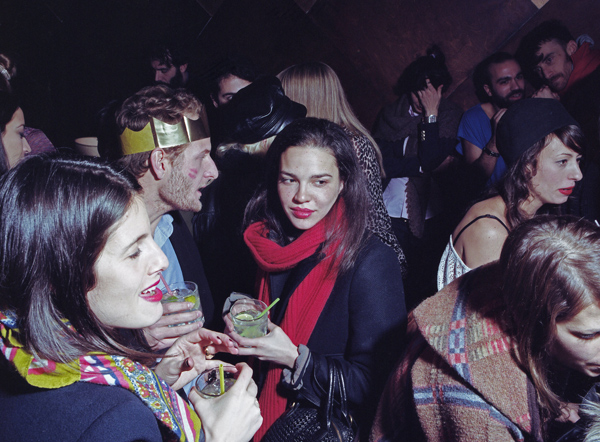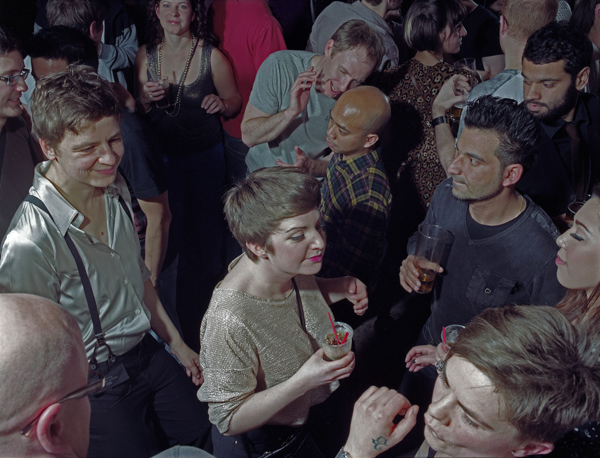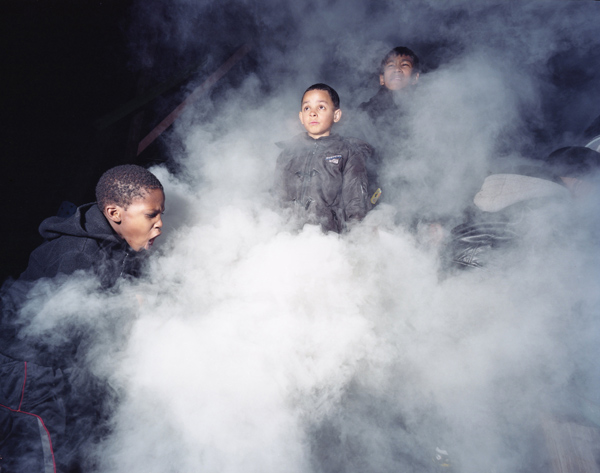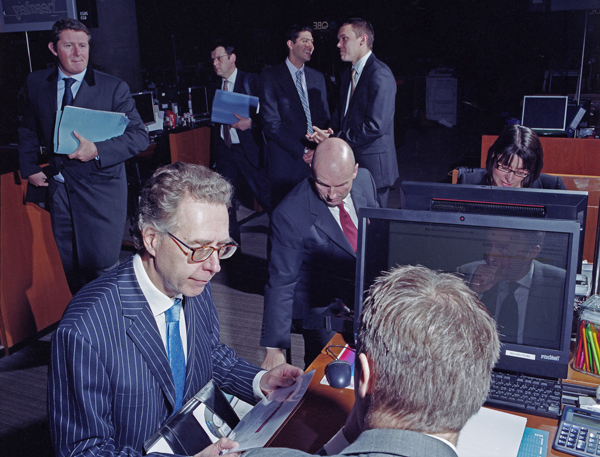Here is London
2012
Photo essay consisting of 20 images, 2012. Commissioned by New York Times Magazine
Nominated for the Pulitzer Prize 2013 by the New York Times
'From December 2011 to January 2012, Mark Neville traveled around London, capturing diverse portraits ranging from nightlife to banking, education to community organizing, and the ways these worlds intersect.'
The work was made synchronously in response to a new text by writer China Mieville 'Oh, London, You Drama Queen', simultaneously commissioned by the New York Times Magazine for its March 2012 Photography Special Magazine on London.
Neville's catalogue text for the exhibition 'London/Pittsburgh':
Between late 2011 and summer 2012 I changed the direction of my practice in order to realise two commissions originating from America. The first of these came from The New York Times Magazine, and involved making work in London over six weeks (this resulted in Here Is London), and the second was an invitation from the Andy Warhol Museum to realise a project in Pittsburgh over a three month period (this became the slideshow installation Braddock/Sewickley). I had never worked for a publication before, nor had I ever produced work for immediate exhibition in an American museum. I had also never worked so quickly; the normal duration for my projects being a year or two. With a gap in production of around five weeks between one project ending and the next beginning, these two separate bodies of work became implicated with one another. Each provided me with an insight into race and class issues in the respective countries, contrasts between rich and poor, black and white, working and upper class, which is made explicit in the work. For me the biggest shock was the difference in race relations between the two cities. The black community in London appeared more integrated than in Pittsburgh; division of wealth in the UK seemingly still defined by an archaic and offensive class system, in America by race.
The work I made in Pittsburgh has strong relations to two of my other projects which also focus upon societies centred upon steel production or ship building; the Port Glasgow Book Project and Deeds Not Words. In Pittsburgh I stayed and worked in two very different areas, Sewickley and Braddock. Much of the wealth generated by the steel industry is still very evident in Sewickley, visible in the glorious houses found in the Heights, in the village shops, and the local country clubs. While a few homes were being built in the late 1890s, Sewickley really took off after 1902 when the Allegheny Country Club relocated there, accelerating the settlement of the area as a haven for wealthy Pittsburgh residents. These social clubs used to be, and still are, an important connection in these circles. By contrast Braddock is home to the Edgar Thomson Steel Works, the first steel mill in America to use the Bessemer process, which now operates as a part of the United States Steel Corporation. Braddock lost its importance with the collapse of the steel industry in the US in the 1970s and 1980s.This coincided with the crack cocaine epidemic of the early 1980s, and the combination of the two woes nearly destroyed the community. The demographics of these two Pittsburgh communities are divided along racial lines. In London the contrasts were found in localised venues. Boujis, a nightclub in South Kensington frequented by Prince Harry, Lloyd’s insurance market, and the London Metal Exchange speak of a perennially class-based establishment Britain which is at odds with the subcultures and lifestyles generated by abject poverty in the UK.
Up until then, and subsequently, I have been realising projects whose primary audience, beneficiaries, and recipients are the very communities which featured in my films and photographs, with the art world sometimes absorbing the work later on. Here I was interested to understand what happened when the work was directly disseminated to a broader audience, such as the one which The New York Times Online spoke to, or the audience of a major public museum.
Would it be possible to explore themes of social division without employing the targeted book and image dissemination which characterised my earlier projects? My feeling was that the images themselves had to work much harder than they had in previous projects, to be more explicit somehow. My audience was different. The plan was to echo the visual style of iconic photographers of the 1970s and 1980s who also looked at an America or Britain undergoing recession, in order to suggest that the same economic and social forces present forty years ago are still strongly at play now. I explored themes of race, education, leisure, tradition, class and ritual, and worked to make the images look timeless or historically indeterminate. I had viewed both London and Pittsburgh through a prism mixed with Charles Dickens and Norman Rockwell. Sometimes the bringing together of two bodies of work made in different locations can generate new insights and reflections upon social divisions in each, and this, for us, was the premise of both this book and the exhibition at the Alan Cristea Gallery, and the subsequent shows at the Silver Eye Centre in Pittsburgh, and the Multimedia Art Museum of Moscow.
- Mark Neville
IN THE PRESS

Selected works from the series

Somerford Grove Adventure Playground in Tottenham, Mark Neville, 2012

Bankers at Boujis Nightclub, Mark Neville 2012

London Metal Exchange, Mark Neville 2012

Somerford Grove Adventure Playground in Tottenham, Mark Neville 2012

Dancefloor of Boujis Nightclub, Mark Neville 2012

Bank of Ideas, Mark Neville 2012

Manero's Nightclub-Hackney, Mark Neville 2012

Dalston Superstore Club, Mark Neville 2012

Kids at Somerford Grove Adventure Playground in Tottenham, Mark Neville 2012

Lloyds of London, Mark Neville 2012

Nightingale Primary School, Mark Neville 2012

Magazine Spread

New York Times Magazine, March 2012
